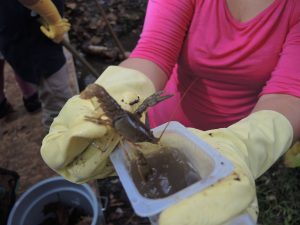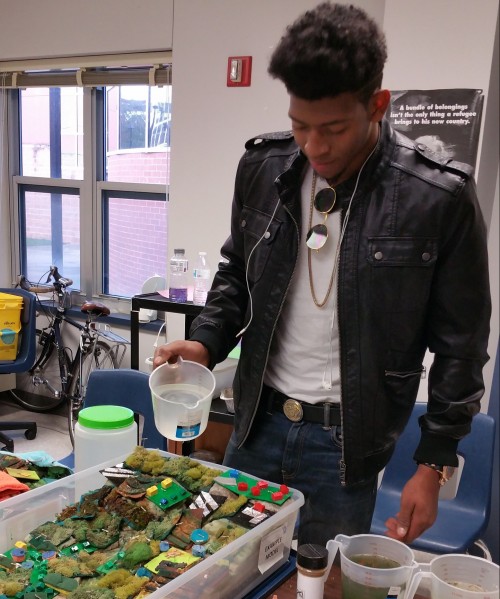Bilingual Educational Materials
Interstate Commission on the Potomac River Basin
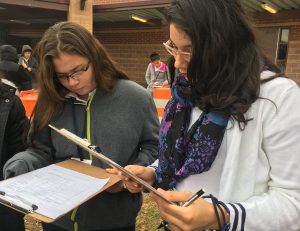 Are you an educator looking to engage your English for Speakers of Other Languages (ESOL) students in real-world investigations of their waterways, natural resources, and watersheds?
Are you an educator looking to engage your English for Speakers of Other Languages (ESOL) students in real-world investigations of their waterways, natural resources, and watersheds?
ICPRB offers bilingual educational materials in English and Spanish that may be used “as is” or adapted to fit your students’ needs. Click on each program title to see program descriptions and lesson plans. As this is the first edition of our bilingual lessons, we welcome your thoughts on their usefulness and possible improvements.
*PDF Presentations marked with an asterisk (*) have a companion PowerPoint presentation. Please Contact us for the file.
Score Four: Students, Schools, Streams, and the Bay
ICPRB’S Score Four: Students, Schools, Streams, and the Bay Program culminates with Student Stormwater Action Projects to reduce water pollution. But before students turn one shovel of dirt, they conduct a series of investigations of their school’s watershed and campus. Students assess permeability, stormwater dynamics, pollution sources, and soils. Using their findings, they plan and implement a Student Stormwater Action Project. Projects can be conservation landscapes, rain barrels, tree plantings, rain gardens, and more. Best for grades 9-12; can be adapted for middle school.
Lesson Plans
We recommend using lessons from each of the following categories sequentially. Most lessons involve a presentation and student inquiry or activity. For more information, refer to the Score Four Lesson Framework. Lessons in English can be found on the Score Four Materials page.
The inquiries can be downloaded individually or as complete sets:
Complete Student Bilingual Notebook | Combined Teacher and Student Bilingual Notebook
A. Exploring Your Watershed
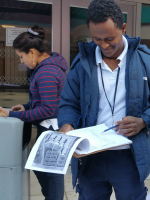 Students learn about their local waters, pollution sources, and solutions for stormwater pollution.
Students learn about their local waters, pollution sources, and solutions for stormwater pollution.
- Background Presentation: Watersheds, Land Use, and Sustainable Practices
- Part 1: Waterways and Watersheds
(Spanish PDF Presentation* | Bilingual PDF Presentation*) - Part 2: Land Use- How Infiltration, Runoff, and Water Quality Differ in Different Landscapes
(Spanish PDF Presentation* | Bilingual PDF Presentation*) - Part 3: Best Management Practices and Stormwater Solutions
(Spanish PDF Presentation* | Bilingual PDF Presentation*)
- Part 1: Waterways and Watersheds
- FieldScope Map Inquiry
Presentation (Spanish PDF Presentation* | Bilingual PDF Presentation*)
Teacher | Student Handout (not available in Spanish) - Topography, Land Use and Stormwater Chemistry
Teacher | Collecting Stormwater Samples
Stormwater Chemistry: Student Handout (English)
Topography: Student Handout (not available in Spanish)
B. Assessing Your Campus
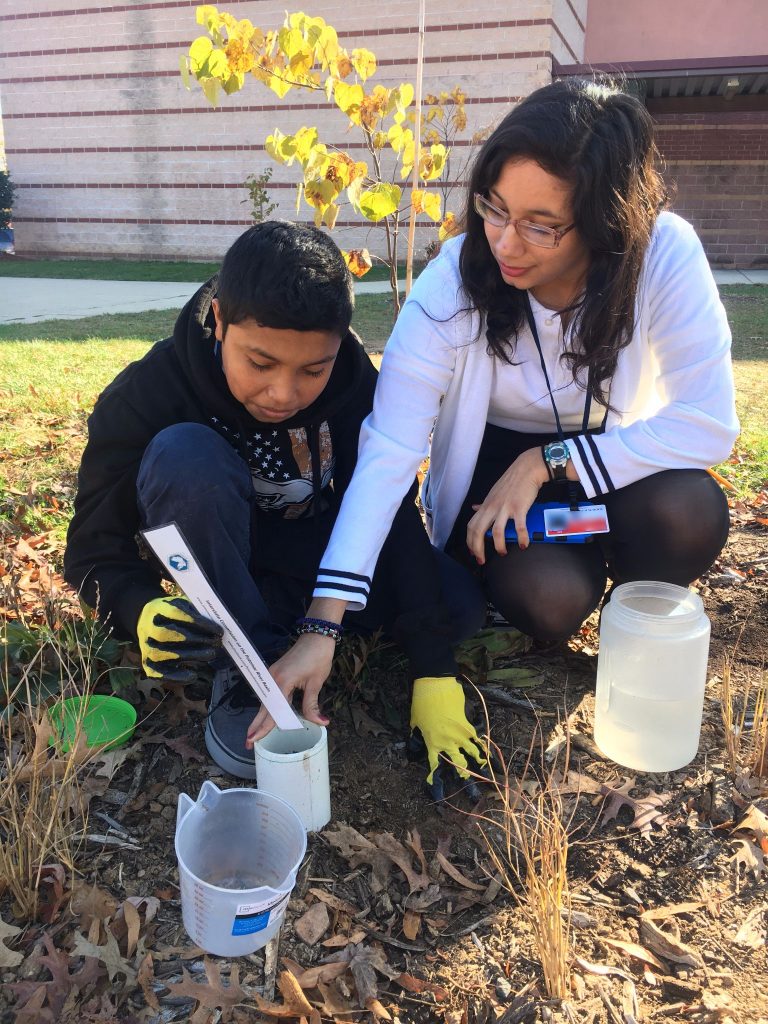 Students discover how their school campus contributes to stormwater pollution.
Students discover how their school campus contributes to stormwater pollution.
- Permeability Prediction
Teacher | Student Handout (Spanish | Bilingual) - Permeability Field Investigation
Teacher | Student Handout (Spanish | Bilingual) - Campus Assessment
Presentation (English PDF Presentation*)
Teacher | Student Handout (Spanish | Bilingual) - Soil Lessons and Inquiries
- Soil Basics Presentation
Middle School (Spanish: PDF Presentation* | Bilingual: PDF Presentation*) - Soil Components
Teacher | Student Handout (Spanish | Bilingual) - Soils Percolation Investigation
Teacher | Student Handout (Spanish | Bilingual)
- Soil Basics Presentation
C. Planning Your Project
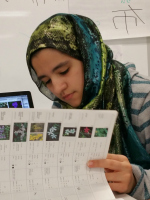 Students investigate factors that affect the growth of plants and trees; set goals for their Stormwater Action Project; pick their site; design a project; and start planting.
Students investigate factors that affect the growth of plants and trees; set goals for their Stormwater Action Project; pick their site; design a project; and start planting.
- Planning Your Project (Teacher)
- Conservation Landscapes and Picking the Project Goals
Presentation (Spanish PDF Presentation* | Bilingual PDF Presentation*)
Student Handout (Spanish | Bilingual) - Site Selection
Student Handout (Spanish | Bilingual) - Sun/Shade Observation
Student Handout (Spanish | Bilingual) - Site Conditions and Project Characteristics
Student Handout (Spanish | Bilingual) - Plant Selection and Garden Design
- Native Plants and Plant Selection (Spanish PDF Presentation* | Bilingual PDF Presentation*)
- Garden Design (Spanish TBA | Bilingual PDF Presentation*)
- Plant Selection and Garden Design Student Handout (not available in Spanish)
- Planning Color for the Seasons Student Handout (Spanish | Bilingual)
- Installing Your Conservation Landscape
Presentation (not available in Spanish)
D. Maintaining Your Project
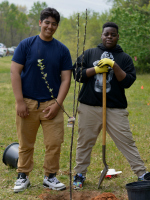 Students plan and create a maintenance schedule to ensure the project continues to meet the class goals for years to come.
Students plan and create a maintenance schedule to ensure the project continues to meet the class goals for years to come.
- Conservation Landscape Maintenance
- Presentation (Spanish PDF Presentation* | Bilingual PDF Presentation*)
- Maintaining Your Project Student Handout (Spanish | Bilingual)
- Maintenance Agreement for Schools with signature page (English only)
Resources
- Stormwater Action Project Resources
- Environmental Resource Directory
- Native Plants for Wildlife Habitat and Conservation Landscaping: PDF | Website
Water Ways: Stream Ecology and Monitoring
ICPRB’s Water Ways program helps teachers (middle through high school classes) start stream ecology or monitoring programs. The program includes presentations, hands-on activities, and resources. The presentations can be done as a series or as stand-alone lessons. Lessons in English can be found Water Ways: Stream Ecology Monitory page.
Overview: Introducing Stream Monitoring
This presentation can be used to introduce stream ecology and stream monitoring to students.
- Introductory Presentation
English PDF Presentation with notes* | Spanish PDF Presentation with notes* | Bilingual PDF Presentation with notes*
Water Chemistry
- Stream Chemistry Monitoring Presentation
English PDF Presentation with notes* | Spanish PDF Presentation with notes* | Bilingual PDF Presentation with notes* - Chemistry Inquiry and Lab
Teacher Instructions | Student Handout (not available in Spanish)
Chemical Properties Cards and Pollutant Photo Cards: Spanish Middle School | Bilingual Middle School
Biomonitoring with Benthic Macroinvertebrates
- Biomonitoring Presentation
Spanish PDF Presentation with notes* | Bilingual PDF Presentation with notes* - Data Sheet
- Supply List
Resources
Kindergarten-Middle School Teacher Resources
- The Cacapon Institute – The Potomac Highland Watershed School provides a game-like approach to learning about benthic macroinvertebrate identification and collection.
- Audubon Naturalist Society – Green Kids provides complete lesson plans and PowerPoints for grades 4-5, covering stream habitat, monitoring procedures, and equipment.
- Izaac Walton League of America – The Creek Freaks Program provides comprehensive teacher and student guides for extensive hands-on inquiries of stream ecosystems for grades 5-8.
High School Teachers
- Explore and Restore Maryland Streams, Maryland Department of Natural Resources Biological Assessment of Stream Health.
- Forms for doing biological and other surveys:
- Overall Student Data Sheet for All Stream Activities
- Coastal Overall Student Data Sheet (for streams in the coastal plain geographic province)
- Maryland Streamwaders Macroinvertebrates by Tolerance Levels, KEY
- Maryland Stream Health Map – view data collected on a stream near your school, using interactive maps and charts of the results
- Resource Guides:
- A Guide To Common Freshwater Invertebrates of North America, J. Reese Voshell, Jr. – Covers life habits and basic anatomy, color illustrations.
- Guide to Aquatic Insects & Crustaceans, Izaac Walton League of America – includes dichotomous key, descriptions of functional groups (feeding methods of different benthic macroinvertebrates)
Watershed Connections
ICPRB’s Watershed Connections program links the connections between watersheds, land use, and water quality, while using a hand built watershed model that students can use to investigate historical land use, water pollution, and the use of best management practices to reduce stormwater runoff. Lessons in English can be found Watershed Connections page.
Build Your Own Watershed Connections Model
- Instructions (Spanish)
- Supply List (English only)
- Pattern Pieces for Model (English only)
- Land Use Piece Instructions (Spanish | Bilingual)
Watershed Connections Presentation
- Part 1: Maryland Waterways and Watersheds
(Spanish PDF Presentation* | Bilingual PDF Presentation*) - Part 2: Land Use- How Infiltration, Runoff, and Water Quality Differ in Different Landscapes
(Spanish PDF Presentation* | Bilingual PDF Presentations*) - Part 3: Best Management Practices and Stormwater Solutions
(Spanish PDF Presentation* | Bilingual PDF Presentation*) - Alternate Presentation
(Created by ESOL teacher Kari Rowe, ideal for beginner English learners or lower grade levels)
(Spanish PDF Presentation* | Bilingual PDF Presentation*

